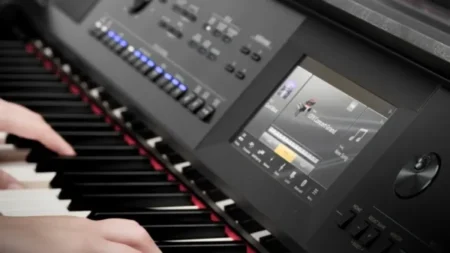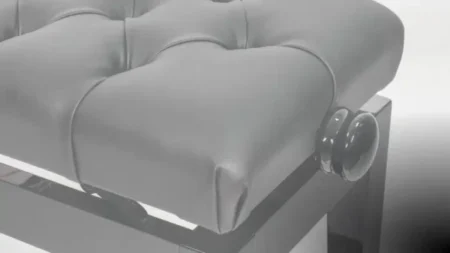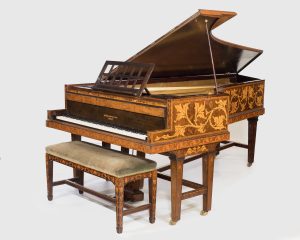We are often asked: what is the difference between a Yamaha U1 upright piano and a Yamaha U3 upright piano?
The two piano models do look almost identical, so in this article we aim to explain some of the differences between them, including:
- Height
- Depth
- Touch
- Tone
Yamaha U1 vs. Yamaha U3: Height & Depth
The biggest difference between the Yamaha U1 and the Yamaha U3 is the height, since the Yamaha U3 is 10cm taller than the Yamaha U1, and a bit deeper (from front to back).
This difference in size affects the sound of the piano because being taller the U3 can house longer strings, giving it a warmer and richer sound than the U1 (or any other shorter upright piano such as the Yamaha B1).
The taller, deeper cabinet of the U3 also means that this model has a larger soundboard to produce a richer and more resonant tone, and longer keys and a taller action makes the touch that bit closer to that of a grand piano compared the U1.
Many of our clients comment that they prefer the proportions of the U1 for their homes. This is because when the keyboard cover is up, the size looks and feels well-balanced with the remaining space above it on the front panel.
Yamaha U1 vs. Yamaha U3: Touch & Tone
When you sit down to play the Yamaha U1 vs. the Yamaha U3 you can feel that the U1 is a little shallower compared with the more balanced touch of the U3. The U3 therefore allows for greater control.
The greatest difference you will notice in tonal power between these two models is most noticeable in the bass section. It is in the bass section that the greater string length of the U3 is maximised.
Many previous clients have found that the U1 can be more balanced throughout as the bass doesn’t overpower the treble as much. Of course if you prefer the extra power and think ‘it’s all about the bass’, than the U3 is the best choice.
The two models are equal in quality when it comes to construction, and while the U1 is smaller than the U3 it does still offer a lot, including a compact size and a lovely consistent tone, typically brighter than the U3.
The tone of a U3 can vary depending on the soundboard and hammers, but that being said, at Coach House Pianos we offer custom toning, so if you have a preference we can adjust the tone of your selected piano, whether that is a U1, U3 or any other piano model.
Yamaha U1 vs. Yamaha U3: Which size piano is best for you?
In considering the right size and tone of piano for you and your space, it is important to think about whether your room has a hard wood floor or carpet, high or low ceilings, and whether you have a lot of soft furnishings or a more minimalist space.
You may feel that the size being the primary difference between the Yamaha U1 and Yamaha U3 is quite insignificant, however it is important, because if a piano is too large for your space it has the potential to overload a room, but if too small it may not project sound well enough. The size, layout and furnishings of your room can affect this too.
If your room has a very heavy carpet and heavy curtains for example, then a brighter piano would be a better choice. We are happy to advise on this if you are not sure.
Yamaha U1 vs. Yamaha U3: Dimensions
| Yamaha U1 Dimensions | Yamaha U3 Dimensions | |
| Height | 48in / 121cm | 52in / 130.5cm |
| Width | 60in / 151cm | 60.5in / 153.5cm |
| Depth | 24in / 61.5cm | 25.5in / 65cm |
| From floor to keyboard | 24in and 1/16th / 61.2cm | 24.5in / 62.2cm |
Come and explore our showrooms
We invite you to our piano showrooms in London or Swansea to compare the Yamaha U1 and Yamaha U3 side-by-side and get to know which piano model would suit you best.









